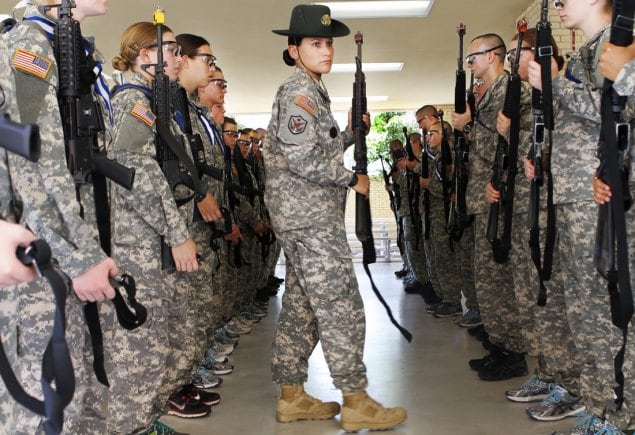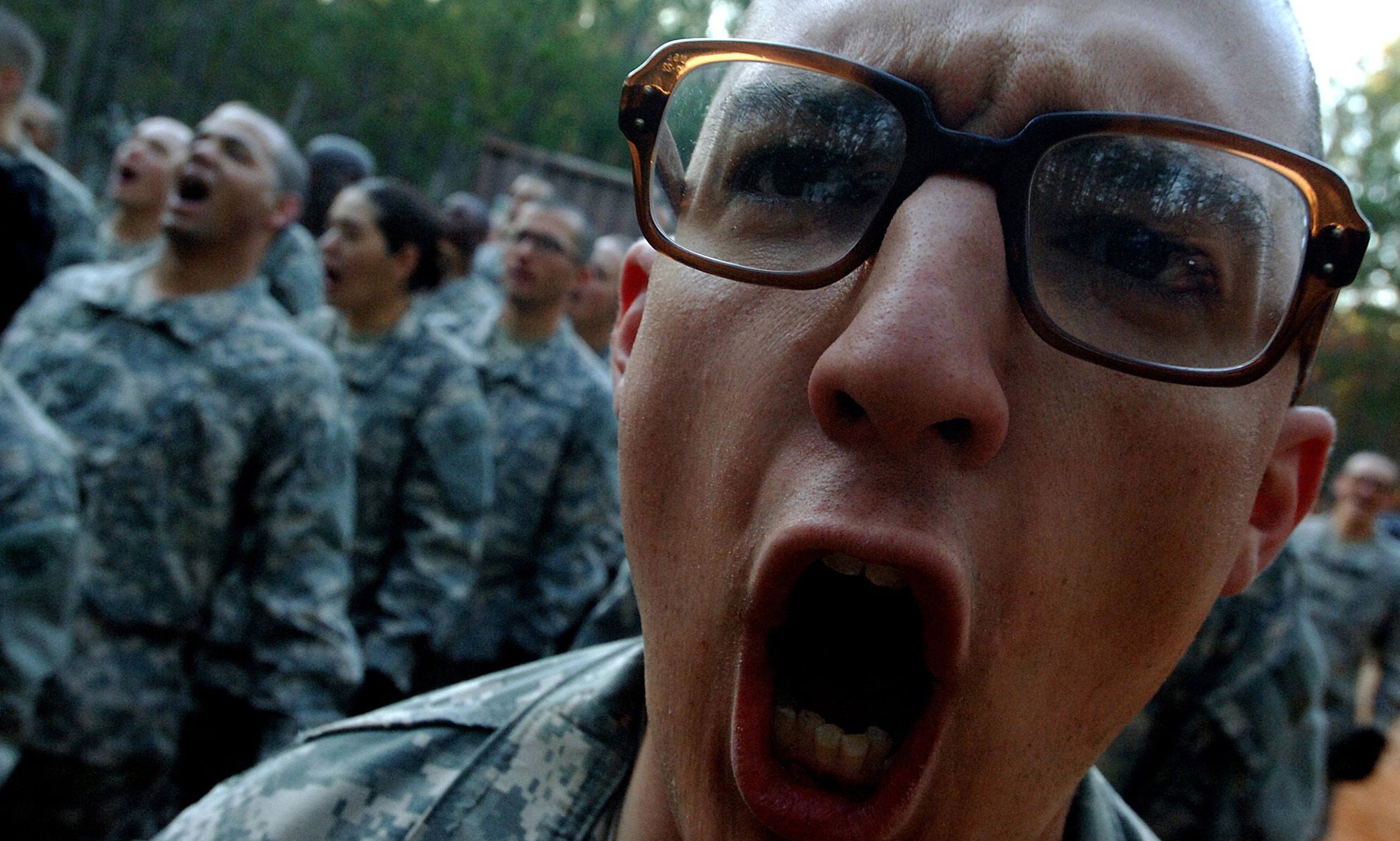The Army is looking to extend the length of basic training, just six months after beefing up the course by rolling out a series of new tests that are mandatory for graduation.
"The No. 1 priority is readiness in our Army," said Command Sgt. Maj. David Davenport, the senior enlisted soldier for Training and Doctrine Command. "When we [at TRADOC] hand that soldier to their first unit of assignment, there are three things we want them to be — fit, disciplined and well trained."
Extending basic training — it is currently almost 10 weeks long — will enable the Army to reduce attrition and give new soldiers more time to increase their fitness and learn their fundamental skills, Davenport said.
"We are looking to add more time so they can do critical thinking, become educated and not trained," he said. "We can focus on character development, physical fitness, marksmanship. It's making a bigger investment of time in our new recruits."
However, there have been no final decisions on whether to extend basic training, or even if it is needed, Davenport said. The solution could be as simple as moving things around within the already allotted 10-week period, he said.
"We're still seeing what that window is, and even if it's needed," he said. "At TRADOC, we think about the future of our Army and readiness. How do we make our Army better? How do we make it more ready?"
Any changes to basic training would come just six months after the Army introduced a series of tests all new soldiers must pass in order to graduate.
The tests, which are trials in the field and not written tests, could include loading and unloading an M249 machine gun, treating an open chest wound or using a rifle as a bludgeon.

The Army is examining whether it needs to extend basic training, which is currently 10 weeks long. Here, Drill Sgt. (Staff Sgt.) Jessica Solorio shows new soldiers how to hold their weapons while in formation during the second week training.
Photo Credit: Spc. Danielle Gregory/Army
Other additions, which were introduced Oct. 1, include peer evaluations and a timed 16K ruck march.
"We looked at making training a little more rigorous," Thriso Hamilton, a training specialist for basic combat training at Victory College, Fort Jackson, South Carolina, said at the time. "We wanted to add an increase in Army values and discipline, a renewed focus on physical fitness, and updated rifle marksmanship training."
The 10-week basic training consists of three phases: red, white and blue. The red and white phases each are three weeks long; blue phase is four weeks.
As part of the changes introduced Oct. 1, the Army brought back "phase testing," which means soldiers must pass a test at the end of every phase before they are allowed to move on. The last time the Army featured phase testing in basic training was prior to 2004.

The Army is looking to lengthen basic training. It is currently 10 weeks long. Here, Drill Sergeant Garus Richardson instructs basic training soldiers to enter the gas chamber on Fort Leonard Wood, Mo.
Photo Credit: Staff Sgt. Ronald Shaw Jr./Army
The tougher standards also mean officials expect more failures and an increase in trainees getting "recycled" and having to re-take portions of basic training. Trainees also can be recycled for character or conduct issues, or discharged for failure to adapt or indiscipline.
With these changes, the Army is "unchained from the 10-week model," Command Sgt. Maj. Dennis Woods, who at the time was the senior enlisted soldier for the Center for Initial Military Training, has said.
"We intend to see a few more [recycles] through phase testing," he said.
The changes to basic training are all designed to increase the quality of soldiers as they enter the Army, Woods said at the time.
"Whenever the Army gets smaller, the quality of individuals needs to be higher," he said.
Michelle Tan is the editor of Army Times and Air Force Times. She has covered the military for Military Times since 2005, and has embedded with U.S. troops in Iraq, Afghanistan, Kuwait, Haiti, Gabon and the Horn of Africa.




